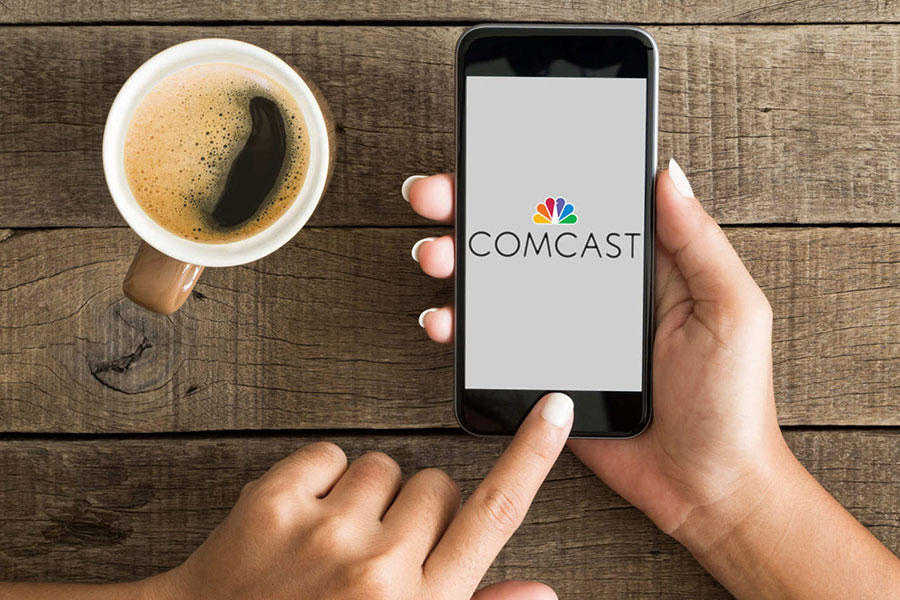There has been a rumor for some time that the largest cable provider in the United States, Comcast, would at some point start offering cellular service.
The rumors proved to be true; the company has confirmed that it plans to expand its market into the mobile service business. CEO Brian Roberts stated this Tuesday at the Goldman Sachs Communacopia conference in New York that Comcast’s cellular network “is getting ready to launch by the middle of next year.” The target demographic for this service? The existing consumer base. This is one of the few bits of information revealed at the conference — other things, such as expected prices, are yet to be revealed to the public.

The service is to be a hybridized system that offers both WiFi and cellular communications. Comcast aims to accomplish this by using their existing 15 million WiFi hotspots across the United States — of which about 8 million are public.
A five-year-old deal with Verizon turns beneficial
Not that it was a bad agreement in the first place, but it will certainly aid Comcast in their efforts to branch into cellular communications: in exchange for expanding Verizon’s mobile capacity by providing airwaves, Comcast had been promised to be allowed to make use of Verizon’s infrastructure when needed.
This would help Comcast overcome the slight limitation of their 15 million WiFi hotspots — which theoretically can be modified so as to provide these new cellular networking services — not reaching some areas of the United States, without having the additional expense of new mobile towers.
This deal was struck in 2011 and cost 3.6 billion dollars.
What to expect
The exact details beyond what has been previously mentioned aren’t yet known, such as what sort of plans and their prices can customers expect from Comcast.
However, Comcast’s CEO noted that about seventy percent of customers bought products in bundles; so Comcast is looking towards offering packages for their clients, not only to sell them more products, but also to give themselves an edge over the competition, or so they expect).
Previous attempts: the ill-fated Pivot service
Along with other cable packages — namely, Cox Communications and Time Warner Cable — and the cellular network provider Sprint, Comcast gave its first step into this market.
The Pivot service, which had to be discontinued — according to a Comcast spokesperson at the time — because of “a lot of operational complexities” that Comcast didn’t want to deal with in the long term.
Pivot launched roughly a decade ago in 2006 and folded after two and a half years of operation in 2008.
It offered cable television, both landline and wireless phone services, and broadband in a single package (and therefore, a single bill). Unfortunately for the associated companies, the joint venture failed to capture the interest of consumers across the United States.
It was because about eighty percent Americans were already subscribed to other cellphone services, who likely were already happy with them, and thus wouldn’t go through the hassle of switching providers.
Also, cable providers being given little freedom in packaging and pricing had their efforts severely limited to make the Pivot package seem actually desirable and enticing enough to make people switch. All this contributed to its downfall.
But this time around, Comcast feels confident about their approach.
“We believe there will be a big paycheck with reduced chum, more stickiness, and better satisfaction,” said the company’s CEO, Brian Roberts.

About Comcast Corporation
The global mass media conglomerate was formerly registered as Comcast Holdings, and is not only the largest cable provider in the United States of America, but it is also the most significant cable television and broadcasting company in the world.
It was founded 53 years ago, on June 28, 1963, by Ralph J. Roberts, the father of current CEO Brian L. Roberts, Daniel Aaron and Julian A. Brodsky.
The corporation has a charitable arm known as the Comcast Foundation, focused on particular on minority groups.
It also provides a program called “Internet Essentials,” which offers free or low-cost Internet to low-income households. Cheap Internet and cable services are also provided to schools.
Its division, Comcast Cable Communications, LLC is the largest cable internet access provider in the United States. It offers cable television, a home security and automation service, landline telephone services, and began to offer web services in late 1996.
Starting in 2013, Comcast started turning customer homes into WiFi hotspots with their XFINITY equipment, which provides XFINITY WiFi to other Comcast subscribers for free across half a million locations in the United States. Comcast claims that this doesn’t affect customer’s Internet speed.
Sources: iTech Post

Everything the the Comcast monopoly offers is always going to be more expensive and detrimental to the average consumer, not to mention, the poor customer support that comes with it. No thanks, I pass!